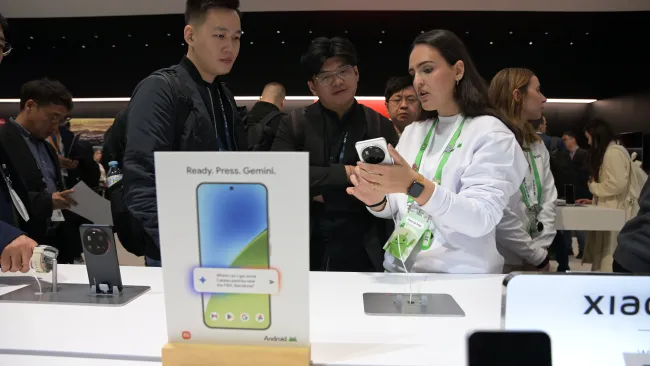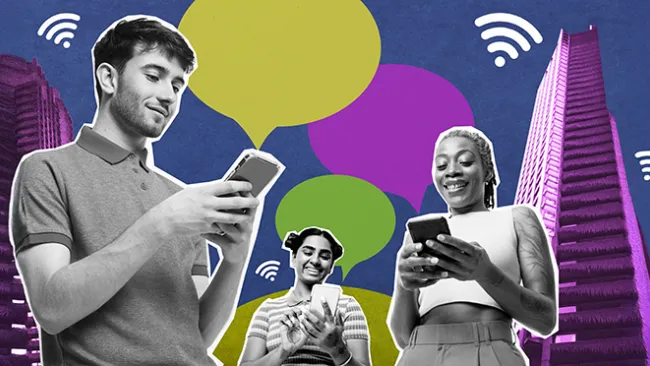Social customer service has been somewhat of an oxymoron. That's about to change. Traditionally leveraged for broadcast-style messaging, social media is fast becoming a mainstay service channel in many organizations.
Telus is one company working diligently to change its employees' perception of social as a one-way channel, as the concept of social customer service gains momentum. The Canadian telecommunications company has been engaging in social media marketing for a number of years. However, it wasn't until the company launched its "Customers First Culture" in mid-2010 that the idea of social media for proactive customer care moved to the forefront of executive discussions.
Customers First Culture is an enterprisewide transformation journey aimed at training customer-facing employees to provide exceptional customer experiences at every touchpoint. The initiative highlighted the need for improvements in what the company calls its "social care" efforts. So, Telus launched a number of social care initiatives and commissioned a social customer service benchmarking study to provide criteria for internal improvements and to encourage enhancements across all industries.
Carol Borghesi, senior vice president of Customers First Culture at Telus, says that reaching the goals of the enterprisewide program requires a sharp customer-centric focus on all contact channels, including social. "We've taken a step back and we recognize that our overarching customer strategy really has to be underpinned by things like the foray into social media," Borghesi says.
According to Borghesi, Telus recognized that caring for customers is no longer confined to traditional contact center associates working in customer service departments.
Additionally, providing great customer experience is more important today than ever before, as positive and negative word-of-mouth spreads quickly throughout the social web. As a result, the company wanted to further leverage and expand its social care efforts, and change the conversation and the dialogue spoken throughout the organization.
The refocus on social began with uncovering opportunities and best practices in social care and learning how other companies were actively shaping their social conversations. These efforts included in-depth research. Telus International, the global arm of Telus, commissioned a study last May to examine the social media efforts of seven Fortune 500 companies: Apple, Best Buy, Dell, DirecTV, Google, HP, and RIM. The goal was to identify the social interaction best practices used by their customer service departments to resolve issues, gather feedback, collaborate on ideas, and build relationships. Telus also wanted to assemble a list of best practices and recommendations for integrating and injecting social care into its traditional customer care environment.
Analyzing best practices
In the study, Telus analyzed five social channels used for social care: blogs, community forums, micro-blogs, social networks, and shared videos. The results surprised Borghesi, who explains that although the seven benchmark companies have a broad presence, none actively post social care content on all their channels. Across the board, the brands studied received high marks from customers. However, the sentiment scores for customer support in social conversations were consistently lower. From those findings, Borghesi concluded that customer service teams, including the team at Telus, have the opportunity to extend their hub of customer interaction to social care, and in doing so, directly boost their overall brand sentiment scores.
According to Borghesi, this finding presents a tremendous customer service opportunity for Telus and other companies, which involves effectively listening and tracking customer conversations about a brand via social channels and integrating that information into existing customer records.
These efforts aren't necessarily confined to traditional contact center associates working in customer service departments. Telus found that some companies empower not only their well-trained customer service representatives, but they also tapped into a larger talent pool to provide positive customer experiences via the social web. For example, several companies also rely on a select group of engineers, product managers, and executives to respond to customers via social channels.
Telus also learned that social care has the potential to boost overall brand perception and, when done right, can actually generate more positive sentiment for the service experience than for the overall brand. In other words, well-executed social care can raise the social brand perception for the entire company. "Social media provides the evidence of the importance of listening actively and ensuring that we're putting our money where our mouth is in a social care perspective," Borghesi says. "We see it as an opportunity for the [telecom] industry in general to focus on social care and get an overall lift in brand sentiment."
Telus has already acted on findings from social care interactions. The company's 25 full-time social care associates are tasked with continuously monitoring Telus' eight customer service–focused Twitter handles, and delivering customer care and responding to issues over those social channels. "That's where we're seeing the opportunity to change a negative customer experience into a positive one. That resonates well with customers," Borghesi says. "Getting an instantaneous response inspires people to say, 'It's refreshing to see a big company that cares about customers.'"
In fact, Twitter has proven to be an especially effective channel for resolving customer issues. Satisfaction surveys uncovered that 15 percent of respondents wouldn't have contacted Telus via another channel. "We find that [Twitter] is a preferred channel for many customers," Borghesi says.
Telus' learning lessons
Today Telus' employees engage prolifically in social channels, but getting them on board to interact in social didn't happen overnight. To encourage social adoption, Telus added a section to its intranet called Habitat Social and provides its approximately 35,000 employees with a suite of tools to communicate, collaborate, and connect online. The tool includes an internal Twitter-like channel called Buzz, employee blogs, and Wikis, as well as a tool to enable internal crowd-sourcing to harness ideas and feedback. The idea was to familiarize employees with social-like settings prior to assigning them the responsibility of responding to customers in external channels. "It's about creating a social enterprise powered by collaboration and learning—helping employees feel more empowered to share and to influence each other," Borghesi explains.
Ensuring that its social care efforts stick is another major undertaking. At the heart of these efforts is weaving social media into the fabric of the organization. "This is where I believe that social media has the power to positively change the corporate culture, both internally and externally," she says.
Consequently, Borghesi made social strategy development a priority for 2012. This includes integrating social care into the company's overall customer contact strategy so the reps get a 360-degree view of the customer. She explains that this move will put customers at the heart of the organization. "Make it your number one priority, and then follow up and make what is wrong with customers right," she advises.
That philosophy is working for Telus. Making Customers First Culture the hub of Telus' social strategy has led to a number of initial wins, including an increased percentage of monthly Facebook, Twitter, and LinkedIn page views. The company also garnered several marketing excellence awards for its Telus Talk Hub. Most important, Borghesi says anchoring the social organization inside Customers First has further strengthened the company's relationships with its customers. While she can't disclose customer satisfaction rates, since the launch of @TELUSsupport in May 2010, the company has completed more than 5,000 customer resolutions via social.
"We think that, ultimately, social media will be firmly embedded in our integrated customer contact strategy," she says. "I'm excited about the democratization of customer contact through social. I'm also excited to see that customers truly have a way to talk to us one-on-one, and one-to-many. It's been energizing for our organization."
5 Best Practices for Building a Social Care Organization
Several best practices for building a social care team emerged from Telus' "Benchmarking Social Media Customer Service" study. Some of these practices are already being employed effectively at the benchmark companies, while others are underutilized practices that represent opportunities for companies to expand and improve their social care efforts.
1) Build a cross-functional team to launch and support social care: To launch a successful social care program, define the vision and objectives, and build a cross-functional team to work toward those goals. The team may include people at all levels and departments. At a minimum, it should have representatives from marketing, legal, and HR.
2) Embrace the appropriate communications style for the channel: Associates must be trained to respond in the character of the brand and the protocol and expectations of the channel. Most companies have communication guidelines that define the voice and tone of the brand. These guidelines are often intended for formal PR and brand communications, but can be adapted for social care within specific channels. In addition, it's important that when associates respond they use appropriate grammar for the channel to ensure clarity of the response. A poorly communicated post can have broad repercussions if it goes viral.
3) Create a response map: Building a communications map lends some process behind how to respond to public conversations. It reduces the risk to corporations of erratic responses and acts as an efficiency aid for associates who are tasked with managing hundreds of social posts a day. A response map helps ensure quick and concise delivery of pertinent customer service information.
4) Follow through on conversations: Reaching out and following through is critical for building real relationships. This can manifest itself in several forms. For example, companies get excited to set up social media channels, like Twitter, but then fail to post updated information. Also, if you request that a customer communicate with you in another channel, such as voice or email, be sure to follow up to resolution while tracking that conversation across the channels used. Most important, it's not just about posting information, but engaging customers and collaborating with them.
Follow-through enhances positive customer sentiment toward a company. Even if the information being communicated is not what the customer wants to hear, knowing the associate followed through in a timely and professional manner mitigates the negative impact. Customers will tolerate problems not being fully resolved as long as the process is seen as fair.
5) Provide proactive social care: Embrace the idea of providing proactive customer care via social. Social care associates have the ability to reach out to customers before they become frustrated and dissatisfied about an issue. A similar best practice is the use of early support cases from other channels to spot problems before they become widespread on the social web, too. Contact customers before they contact you.

















